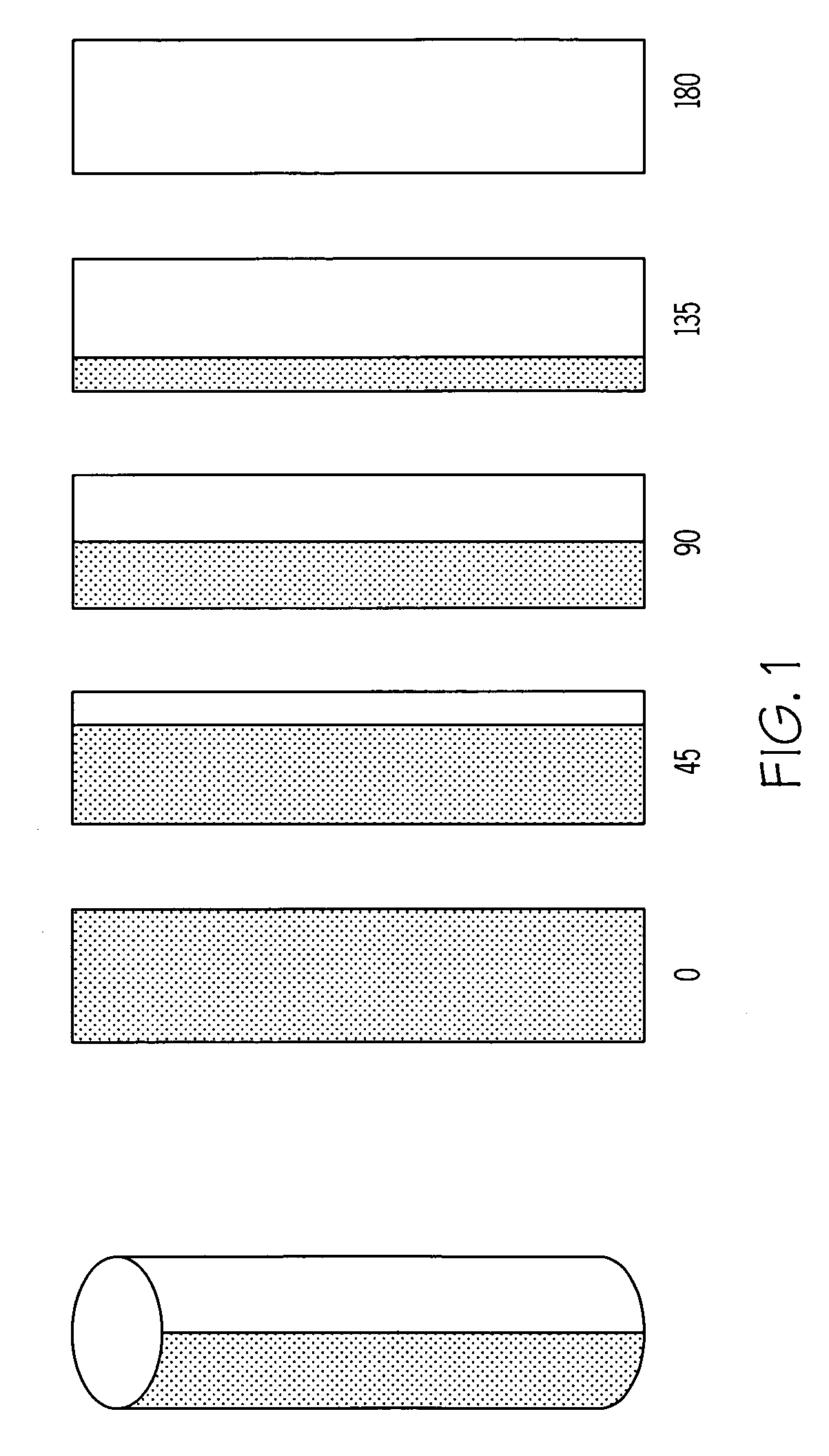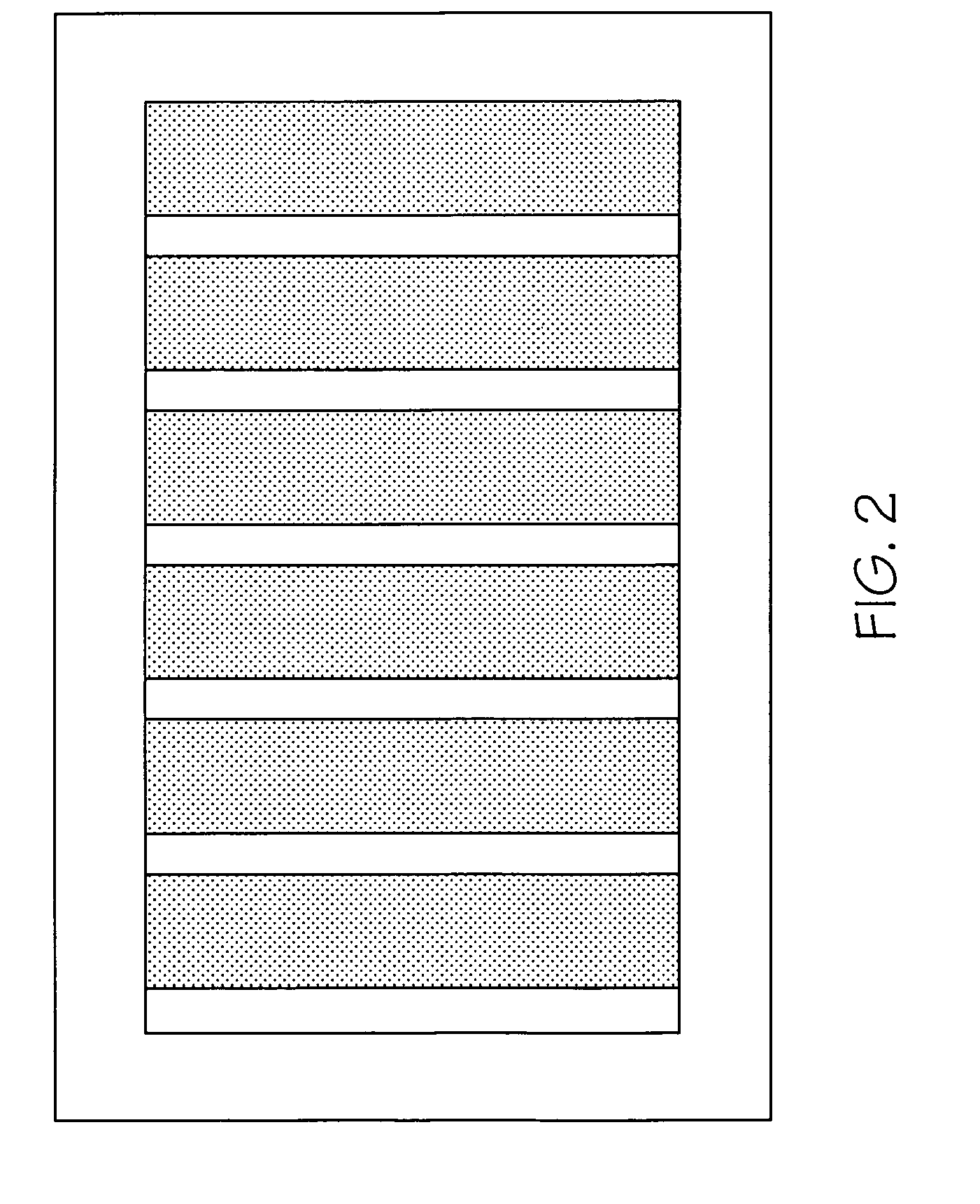Variable emittance surfaces
a technology of emittance surface and variable, which is applied in the field of remote detection of various objects, can solve the problems that the thermal imaging sensor would have trouble distinguishing this small area from the background
- Summary
- Abstract
- Description
- Claims
- Application Information
AI Technical Summary
Benefits of technology
Problems solved by technology
Method used
Image
Examples
Embodiment Construction
[0028]From the point of view of a thermal sensor, the variable emittance surfaces of the invention, enables an operator to choose the surface of an object from a continuum of treated surfaces with different spectral emittance and reflectance properties in fractions of a second. However, prior to describing the invention in detail, the theory of the invention must be described.
Theory
[0029]Suppose a plane target surface is normal to a sensor line of sight and half the detector footprint on a target falls entirely on a surface with emissivity ε1 and the other half falls on a surface with emissivity ε2. For this case the emittance seen by the detector is ½(ε1+ε2). More generally if the detector footprint has area A and area Ai of the footprint is on a surface with emissivity εi, then the effective emittance ε seen by the detector is given by
[0030]ɛ=∑i=1nAiɛi∑i=1nAi(1)
[0031]Here the sum in the denominator equals the area A of the detector footprint. Equation (1) asserts the effectiv...
PUM
| Property | Measurement | Unit |
|---|---|---|
| size | aaaaa | aaaaa |
| size | aaaaa | aaaaa |
| angle | aaaaa | aaaaa |
Abstract
Description
Claims
Application Information
 Login to View More
Login to View More - R&D
- Intellectual Property
- Life Sciences
- Materials
- Tech Scout
- Unparalleled Data Quality
- Higher Quality Content
- 60% Fewer Hallucinations
Browse by: Latest US Patents, China's latest patents, Technical Efficacy Thesaurus, Application Domain, Technology Topic, Popular Technical Reports.
© 2025 PatSnap. All rights reserved.Legal|Privacy policy|Modern Slavery Act Transparency Statement|Sitemap|About US| Contact US: help@patsnap.com



